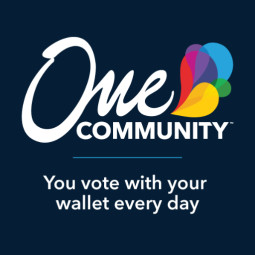
What is one way for a business to ensure equality for all employees in the workplace?
To help businesses ensure equality for all employees, we asked business leaders and people managers this question for their best insights. From investing in proper training and development to offering virtual options, there are several ways for businesses to ensure equality for all employees in the workplace.
Here are ten ways for businesses to ensure equality for all employees:
- Invest in Proper Training and Development
- Create a Safe Work Environment
- Make Accommodations for Employees
- Inclusivity Begins at the Recruitment Stage
- Salary Transparency
- Include a DE&I Team
- Listen to All Employees
- Non-binary Gender Inclusion
- Try Blind Hiring
- Always Offer Virtual Options
Invest in Proper Training and Development
A business needs to foster a culture in which equality is a primary value, and this can be done through proper training and development. Evaluate your workplace’s culture, surveying employees to see where there are shortcomings. Then, invest in training and development programs that increase understanding of equality, enabling employees to take more responsibility for the advancement of equality in the workplace.
Randall Smalley, Cruise America
Create a Safe Work Environment
Have an outlet for your employees to reach out to management and decision-makers on issues that they may feel uncomfortable publicly speaking on. Foster a policy where these thoughts can be shared discreetly and taken seriously in order to promote equality within your company culture. There won't be changes made to ensure equality in the workplace if you do not know which issues to properly address.
Jacob Dayan, Community Tax
Make Accommodations for Employees
Have regular meetings with all of your employees. Showing them that you welcome feedback goes a long way in making them feel more comfortable in the workplace. It is advantageous to talk to them about bigger issues and show that the culture of your work environment supports equality and the issues surrounding it. Employees want to feel safe at work. Taking these steps will help in this regard.
Brittany Kaiser, Gryphon Digital Mining
Inclusivity Begins at the Recruitment Stage
Developing an inclusive team begins at the recruitment stage. The hiring and onboarding process is an opportunity to communicate your company's culture and vision while facilitating a workplace strategy that is united rather than perpetuating a divided culture. Diversity selection isn't enough. It's also about instilling the concept that different backgrounds enhance creativity and perspective.
Nick Shackelford, Structured Agency
Salary Transparency
In the workplace, salaries are the best indicator of inequality between employees. For example, certain employees may receive additional pay benefits due to favoritism. Salary transparency solves that problem because it eliminates pay disparities and fosters employee trust.
Tomek Mlodzki, PhotoAiD
Include a DE&I Team
Implementing a DE&I team is a great way to create a level of trust and an arena of diversity inclusion within the company. DE&I teams keep companies honest with their hiring and treatment of employees, providing equality across all teams and employees. If your business objective is to ensure equality, a DE&I team will help meet that goal.
Michael Jankie, Natural Patch
Listen to All Employees
When evaluating over 80 HR and business practices that drive excellence in equality, as well as a series of business outcomes, one practice was by far the best marker of sustained excellence: listening to employees and acting on results. Listening to employees switches equality from a compliance program to a business strategy focused on performance and continuous improvement. When leaders listen first, then hear what was said, and then take appropriate action, they naturally create an environment of belonging, inclusion, and equality - everyone's voice matters.
Brett Wells, Perceptyx
Non-binary Gender Inclusion
Workplace equality can be defined as the absence of discrimination. Many factors contribute to its rate, and one of them is non-binary inclusion that does not discriminate against gender identities or groups. How to maintain it? During the recruitment process, be clear that gender expression (e.g., outfit or hairstyle) and gender identity are protected, and any violations are not accepted. With that said, there should be no place for intolerance in the workplace. It is also good to allow employees to self-identify on HR platforms and systems.
Magdalena Sadowska, PhotoAiD
Try Blind Hiring
Equality begins with challenging assumptions and the hidden biases we all carry. Start a blind hiring process to level the playing field on the front end. I have worked with a hiring platform called Career. A place that keeps candidate profiles anonymous until the hiring manager selects the option to unlock the profile at the finalist stage. The benefits are threefold: better hiring for a diverse workforce, ensuring compliance, and branding for an innovative candidate experience.
Laura OConnell, PATH HR CO
Always Offer Virtual Options
Remote work has been a huge boon toward reducing ableism and ensuring everyone gets a seat at the table. Why? Because in a virtual meeting there is no physical table or any walls keeping people out. Workers can all have access and, with proper planning, have their say in what goes on.
Offer a remote or virtual option for any meeting that can have one. Default to remote work in everything you possibly can. This opens up more avenues for workers to connect, leading to better equality across the board.
Nate Tsang, WallStreetZen
Terkel creates community-driven content featuring expert insights. Sign up at terkel.io to answer questions and get published.
